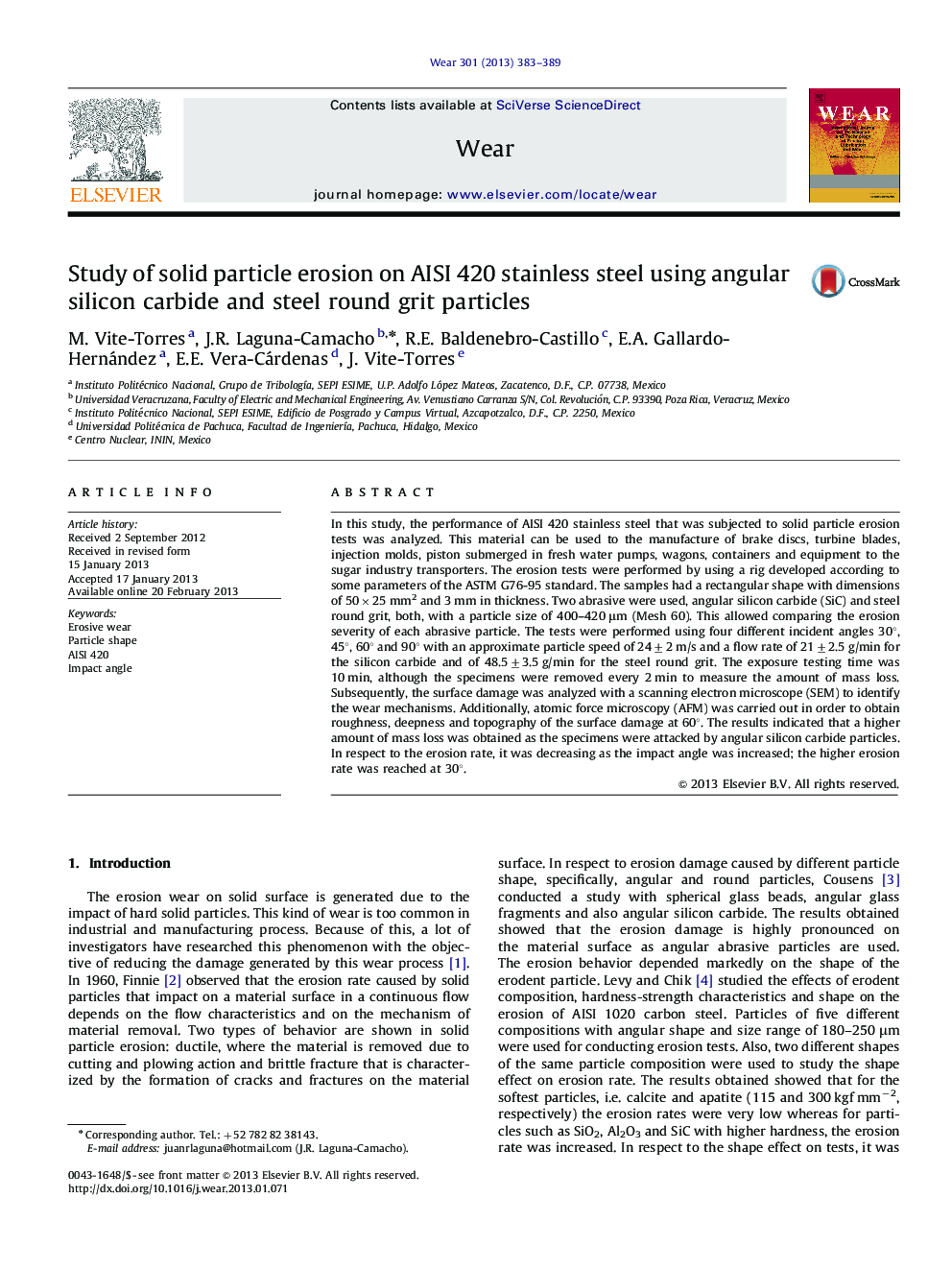| Article ID | Journal | Published Year | Pages | File Type |
|---|---|---|---|---|
| 617545 | Wear | 2013 | 7 Pages |
Abstract
In this study, the performance of AISI 420 stainless steel that was subjected to solid particle erosion tests was analyzed. This material can be used to the manufacture of brake discs, turbine blades, injection molds, piston submerged in fresh water pumps, wagons, containers and equipment to the sugar industry transporters. The erosion tests were performed by using a rig developed according to some parameters of the ASTM G76-95 standard. The samples had a rectangular shape with dimensions of 50Ã25 mm2 and 3 mm in thickness. Two abrasive were used, angular silicon carbide (SiC) and steel round grit, both, with a particle size of 400-420 μm (Mesh 60). This allowed comparing the erosion severity of each abrasive particle. The tests were performed using four different incident angles 30°, 45°, 60° and 90° with an approximate particle speed of 24±2 m/s and a flow rate of 21±2.5 g/min for the silicon carbide and of 48.5±3.5 g/min for the steel round grit. The exposure testing time was 10 min, although the specimens were removed every 2 min to measure the amount of mass loss. Subsequently, the surface damage was analyzed with a scanning electron microscope (SEM) to identify the wear mechanisms. Additionally, atomic force microscopy (AFM) was carried out in order to obtain roughness, deepness and topography of the surface damage at 60°. The results indicated that a higher amount of mass loss was obtained as the specimens were attacked by angular silicon carbide particles. In respect to the erosion rate, it was decreasing as the impact angle was increased; the higher erosion rate was reached at 30°.
Related Topics
Physical Sciences and Engineering
Chemical Engineering
Colloid and Surface Chemistry
Authors
M. Vite-Torres, J.R. Laguna-Camacho, R.E. Baldenebro-Castillo, E.A. Gallardo-Hernández, E.E. Vera-Cárdenas, J. Vite-Torres,
